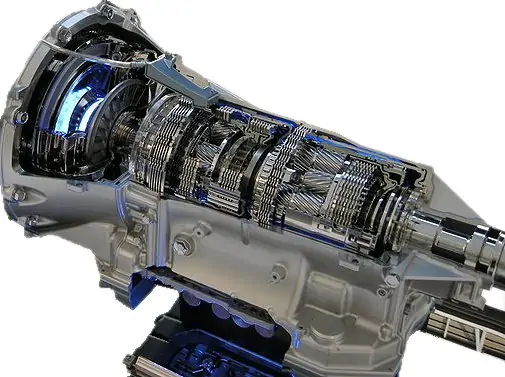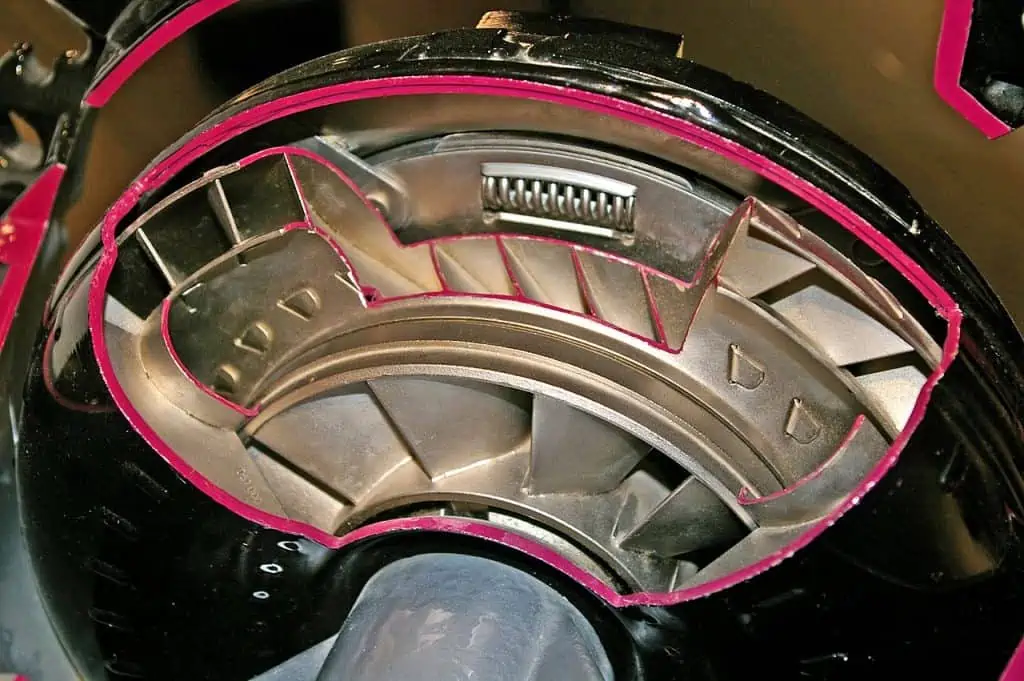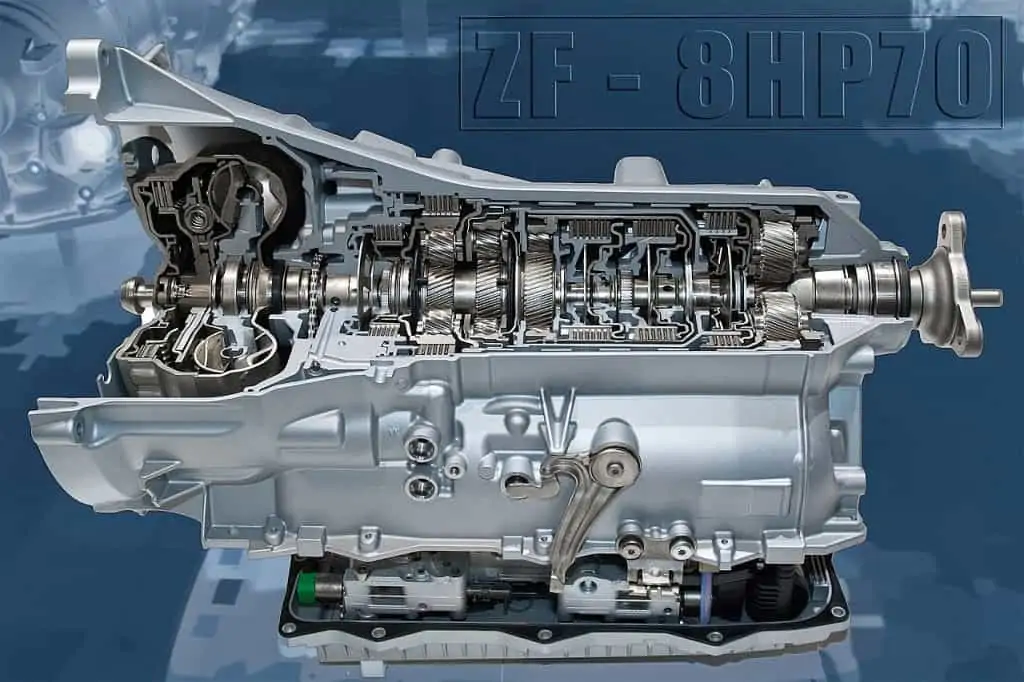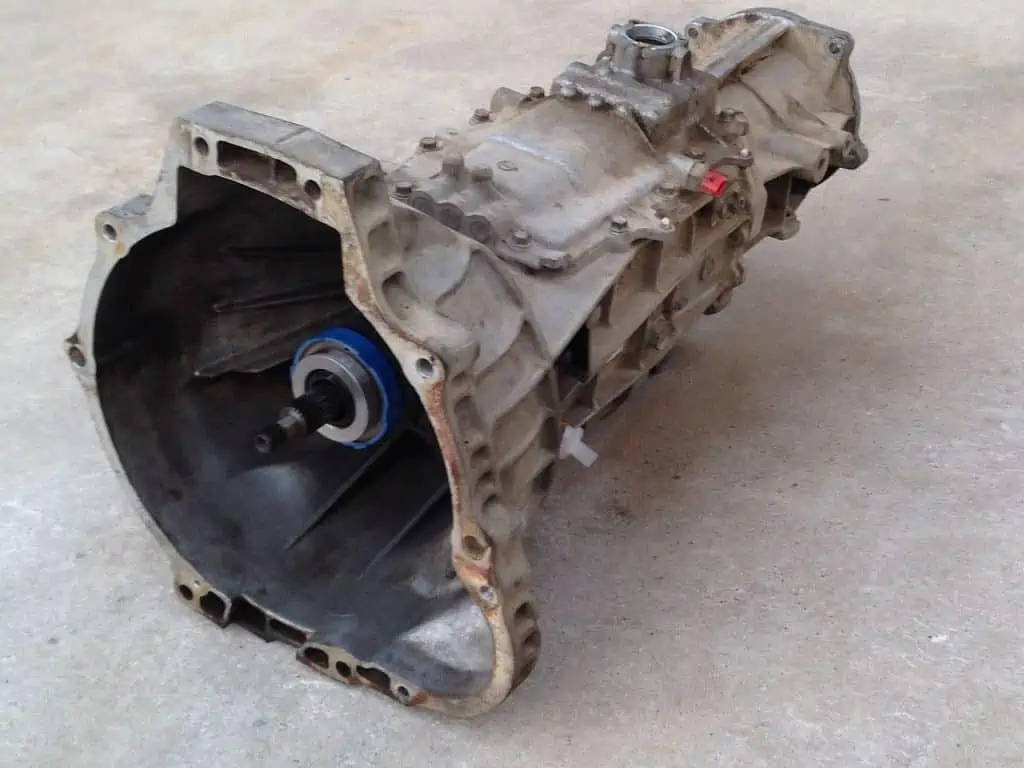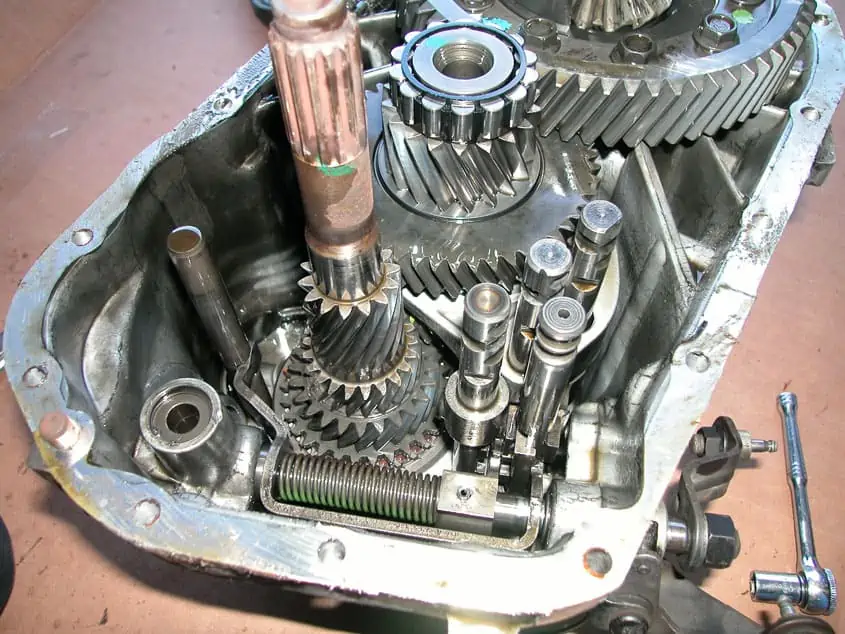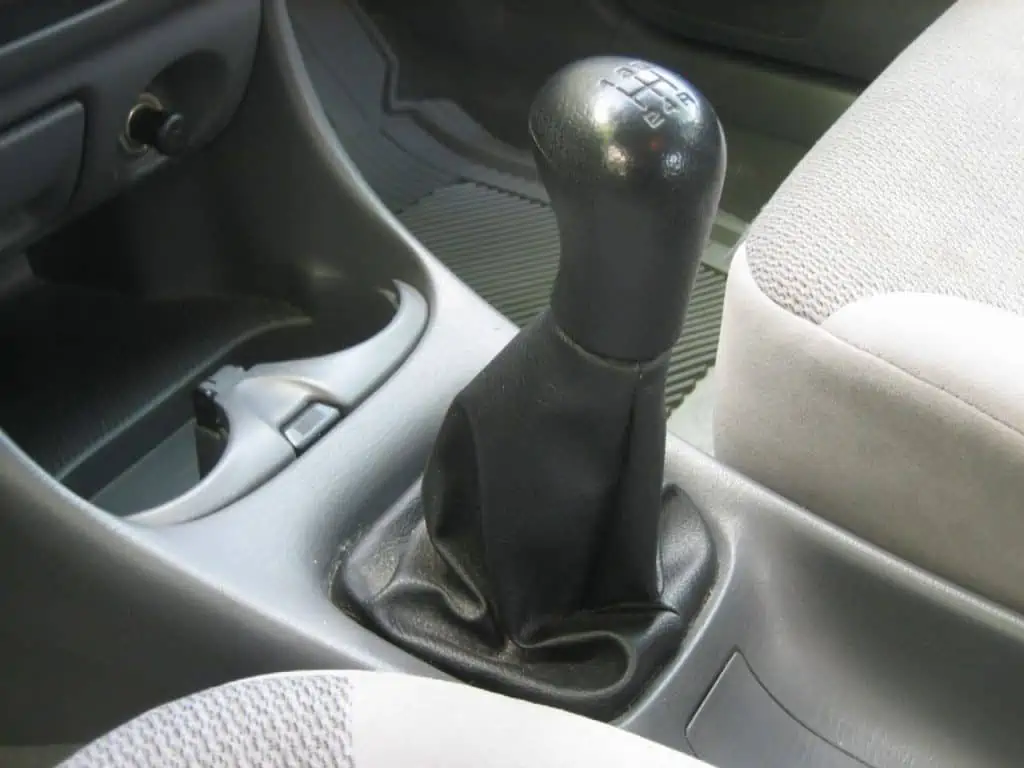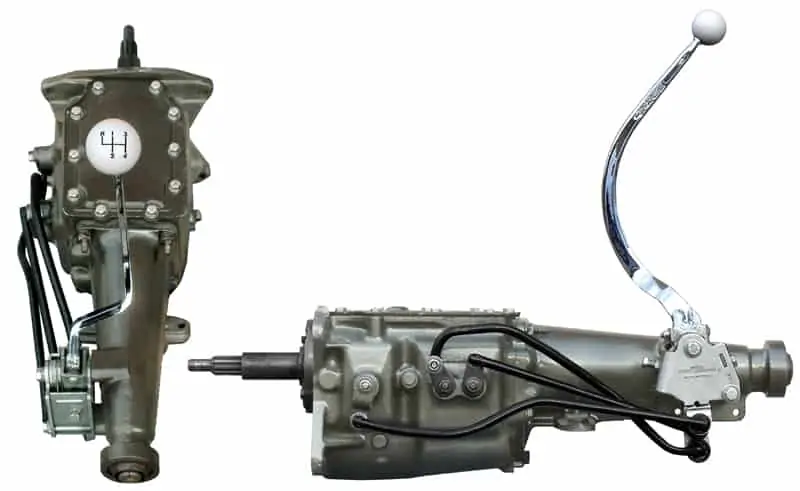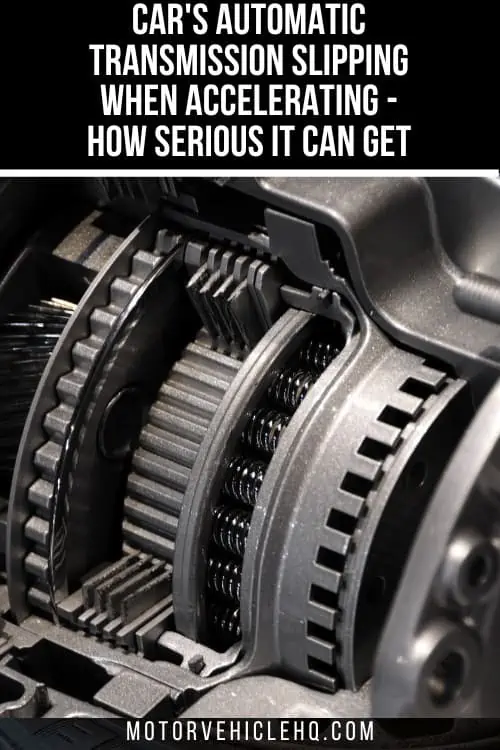As you can imagine, it may be incredibly annoying and hazardous when you experience an automatic transmission slipping when accelerating. Since you have been driving for some time and are familiar with how your vehicle should operate, you should be able to tell when something is wrong with it.
If something is wrong, you could hear your engine crank but your car won’t accelerate as it should when you try to overtake someone or push up a hill. A sliding engine, transmission, or gearbox might be to blame for this.
Automatic Transmission slipping when accelerating is a frequent problem that occasionally occurs. Transmission slippage will only be unsettling, annoying, and unpleasant in the early stages.
However, if you ignore the issue and keep using the car for a while, the entire system will suffer catastrophic harm. This is why when the transmission starts sliding, you need to do a complete examination.
Not only do automatic transmissions employ automatic qualities, but they also use an entirely distinct system and mechanics to effectively shift gears, which makes them operate quite differently from manual transmissions.
Finding the problem and the warning signals is essential to understanding why the automatic gearbox slips when accelerating.
Is fixing automatic transmission slipping when accelerating difficult? Can I complete it on my own? Stop worrying and commit yourself to follow me. The reasons for an automatic transmission slipping when accelerating, warning signals you should look out for, and solutions will all be covered in detail in this article.
A Car Transmission: What Is It?
A transmission is a component of a vehicle’s powertrain that converts engine power into mechanical motion by sending it to the wheels. In typical consumer vehicles, manual gearboxes, conventional automatic transmissions, and continuously variable automatic transmissions are the most prevalent types of transmissions (CVT).
Automatic transmission by Silverxxx / CC BY-SA 3.0. If you have an automatic transmission and notice that it is sliding while you are driving, low transmission fluid is the most common cause of this issue. The transmission fluid is necessary to lubricate the parts and preserve your car’s optimal operation.
While an automatic gearbox does not need a clutch pedal and automatically shifts among its gear sets, a manual transmission does require a clutch pedal and gears that are activated by the driver via a gear shifter. An alternative kind of automatic gearbox called a CVT employs pulleys and belts or chains to produce smooth acceleration without using gear steps.
The torque converter, valve body, and planetary gear sets are a transmission’s key parts (transmissions are incredibly complicated machinery).
The torque converter is the component that converts and multiplies engine power, while the valve body regulates fluid and gear timing and the gearbox establishes drive ratios. The acceleration, speed, and driving qualities depend on the gear ratio.
The Function of a Car Transmission
The driver sees a column shifter, push-button shifter, rotary dial shifter, or shift lever inside a car, along with either a manual stick shift or an automated shifter. Depending on how many gears the vehicle has, a stick shift will normally be labeled “R, 1, 2, 3, 4, 5, 6,” whereas an automatic gearbox will typically be labeled “P, R, N, D, L,” with a few digits and a S occasionally appearing. P indicates park, R stands for reverse, N represents neutral, D stands for the drive, and L stands for low gears on an automatic transmission. Change the transmission, then the shifter.
Automatic Shifting Transmission
A set of gears are engaged in a car with an automatic gearbox by placing the vehicle in drive mode. An output shaft of a gearbox transfers engine power to the wheels after receiving it from the input shaft. The gears continually shift in automatic gearboxes to account for throttle input and speed. Automatic transmissions automatically disengage when the vehicle comes to a stop.
Manual Shifting Transmission
The driver of a vehicle with a manual gearbox, also known as a standard transmission or a stick shift, must use the clutch pedal and the hand shifter to change the transmission through the gears. Every time the car has to change gears, the driver depresses the clutch pedal.
In a nutshell, both manual and automatic gearboxes move power from the engine to the drive wheels. Let’s move on to the cause of the energy transmission disruption.
Car Transmission Slipping: What Does This Mean?
Slipping happens when the engine is running but the automatic vehicles aren’t accelerating. This indicates that the engine’s power does not transfer to the wheels. Low-level fluid is the most typical cause of this issue. Similar slippage can occur with manual transmissions, although the clutch is more likely to be the culprit.
How Do Vehicle Transmission Gears Operate?
When it comes to transmissions, there are several variations.
In the past, there were only two options: manual or automatic. Nowadays, however, vehicles can have a variety of transmissions, including CVT, DCT, Automated-Manual, Direct Shift, and Tiptronic. The clutch and gear selector are standard features of a manual gearbox.
The driver physically engages and disengages the clutch, which controls the driving shaft. The clutch must be engaged and disengaged manually in addition to changing the gears.
Through a bell-housing that houses a torque converter, automatic gearboxes are connected to the engine. Rather than a clutch, a torque converter is employed. The driver has the option of manually changing gears or letting the converter handle it.
No matter what kind of transmission you have, it moves the wheels by utilizing a variety of gear ratios that cooperate with the engine’s speed and torque to maintain it within the appropriate powerband.
Torque converter by BerndB~commonswiki / CC BY-SA 3.0. If the converter is damaged, the automatic transmission may slip when accelerating because the transmission fluid won’t be able to pass through the torque converter. On the other hand, if the torque converter is operating correctly, fluid will pass through it.
Your transmission utilizes a particular lubricant to guarantee the gears work easily and prevent overheating since, as you may expect, there is a lot of heat and friction created by a large number of moving parts.
To keep the transmission operating at its best, transmission fluid must be replenished at predetermined service intervals.
What are the Causes of Car Automatic Transmission Slipping When Accelerating?
We are all aware that the automatic gearbox is an important part of your car. It is in charge of transforming the engine’s power into power that moves your wheels and propels you ahead.
Remember that this is a result of more than just the transmission’s power; the movement of the vehicle is also assisted by a lot of hydraulic fluid, gears, and clutches.
There is generally a solution if you do not know why the automatic gearbox slides as you accelerate. The solution may be extremely serious and call for the repair or replacement of certain parts.
Depending on the type of gearbox your car has, the reason why you are experiencing automatic transmission slipping when accelerating will vary. Automatic, normal, or manual, and CVT, continuously variable transmission, are the three basic types of transmission.
The Automatic Transmission Slipping When Accelerating: Why Does This Happen?
Transmission slippage, which can be harmful, refers to the transmission failing to change between gear ranges or even slipping off gear. My gearbox is sliding, so why is that a question? Here are some typical causes of automatic transmission slipping when accelerating;
1. Lower Levels of Transmission Fluid
Low transmission fluid is the most typical source of this problem if you have an automatic transmission and discover that it is slipping while you are driving. The transmission fluid is required to lubricate the components and maintain the proper operation of your vehicle.
If your gearbox slides, the car’s engine will continue to rev but won’t transmit any power to the wheels to propel the vehicle. If there is insufficient transmission fluid, the slippage will only worsen as the transmission warms up and friction increases from use.
2. Burnt Transmission Fluid
Sometimes the burning of the transmission fluid rather than merely a low level in your vehicle might cause the automatic gearbox to slide when you accelerate.
This is probably the problem if the fluid is the wrong color, such as black instead of red, or if you smell burning. When the gearbox overheats and there is too much friction, burned fluid might happen. You should replace your transmission fluid in this situation.
3. Clutch Issues
Both automatic and manual transmissions employ clutches, and while clutch problems are more prevalent in manual vehicles, they may also affect automatic vehicles.
The automatic gearbox may slide when accelerating as a result of these clutch problems. A lack of transmission fluid can cause the clutch plates of an automatic gearbox and torque converter to wear out and be damaged.
Transmission and Torque Converter by Ritchyblack (FAL)The essential components of a gearbox are the torque converter, valve body, and planetary gear sets. The part that transforms and multiplies engine power is the torque converter, whereas the valve body controls fluid and gear timing and the gearbox creates driving ratios. The gear ratio affects acceleration, speed, and driving characteristics.
4. Problem with the Torque Converter
The torque converter’s primary job is to transform the engine’s horsepower into torque, which the transmission can utilize. The torque converter will deteriorate and sustain damage over time.
If the converter is broken, the transmission fluid won’t be able to flow through the torque converter and might cause the automatic gearbox to slip when accelerating. Conversely, if the converter is working properly, the fluid will flow through the torque converter.
5. The Faulty Transmission Bands
In addition to the aforementioned problems brought on by an automatic gearbox slipping when accelerating, the transmission bands may also deteriorate, wear out with time, and suffer damage.
Since the transmission is in charge of connecting your gears, these problems may cause the transmission to slide.
6. Damaged Gears
The automatic gearbox might start sliding mostly due to the gear configuration. Your car’s gear set needs a variety of clutches and bands to change the ratios and control the pace of the changes.
If the fluid is not the problem, the bands in the automatic gearbox are often the main problem when it comes to slipping since slipping may be an indication of a worn band.
After changing gears, the transmission’s components may continue to revolve for a short while due to worn-out and damaged bands.
The gears seem sloppy because the rotation keeps going after you change speeds, which causes your engine to crank during a gear change and the automatic transmission to slide as you accelerate.
7. Solenoids Problems
Your transmission issues might be caused by more than just a worn band and low transmission fluid. The transmission solenoids that transform the automatic transmission fluid into the different components in your transmission cause things to move and the clutches and bands released from the system trigger the gear changes in the automatic transmission.
The issue with an automatic gearbox that slips when accelerating is that it might be difficult to diagnose the issue without ripping the transmission apart to check for worn or broken components or without using specialized tools at a mechanic’s shop.
Diagnostic tools may be used to identify problem codes in computer-controlled gearboxes, much as how you might notice the check engine light is on in your car.
The only thing you can do as the owner of a car that could be experiencing automatic transmission problems with slippage when accelerating is to identify the cause of the problem, check the fluid level, and assess the condition of the transmission.
As with complete transmission replacements, transmission repairs may be exceedingly expensive.
What are the Symptoms of an Automatic Transmission Slipping When Accelerating?
It might be intimidating and challenging to handle a sliding gearbox. With any vehicle, especially one with automatic transmissions, it may also be a major issue. It’s important to address this minor problem immediately to prevent it from getting worse. You must be aware of the automatic transmission slipping when accelerating warning signs and symptoms to address the problem as soon as you observe it.
Manual transmission by Typhoon / CC BY-SA 3.0. There used to be just two choices: automatic or manual. However, there are now other gearbox options available for cars, including CVT, DCT, Automated-Manual, Direct Shift, and Tiptronic. A manual gearbox must include the clutch and gear selector as standard components.
1. Transmission Fluid Leak
If you see red transmission fluid dripping from beneath your car, there is probably a leak in the transmission coming from one of the seals, gaskets, or lines in the transmission.
In addition to shortening the transmission’s lifespan, this might be harmful if the fluid pours onto a hot surface. Without using a dipstick, you should check the transmission fluid level to see whether it needs topping off or replacing.
2. Burning Odor
Any scents emanating from your vehicle, including burning smells, are an immediate indicator that something is amiss. The key to identifying the problem is figuring out where the stench is coming from. Typically, a transmission fluid leak and low transmission fluid levels cause a probable burning smell. It is essential to identify this issue early on before the leak gets out of control and before the transmission can be fixed.
3. Inability to Maintain Gear
A transmission fluid leak from one of the seals, gaskets, or lines could be a sign of other issues with your automatic transmission valve, the shifter cable, or the shifter itself.
It may even be necessary to have the technician you bring your vehicle check the computer system to determine if any diagnostic fault codes have been generated using a diagnostic scanner. This will manifest because the computer informs the transmission when it has to shift into a different gear.
4. The Loss of Power
The engine control unit or vehicle computer may be restricting the power to the engine when your engine is operating properly and smoothly yet your vehicle has very little or no power.
Other possible causes include malfunctioning brake components, such as the brake hose or brake calipers, or internal transmission issues.
5. Lack of Gears
These issues may be brought on by a low level of transmission fluid, which might result from water entering the transmission, poor maintenance, contaminated fluid, or a leak in the fluid system. If you ignore this problem and allow it to worsen over time, it may result in engine overheating, excessive friction, and major damage that may necessitate replacing the engine.
Missing or delayed shifts in the gearbox can also be caused by issues with the engine, which would cause the engine control unit to prohibit the transmission from shifting into a higher gear and working properly.
6. Unusual Noises
If your vehicle makes certain noises, especially if they come from underneath the hood, like humming, clunking, or buzzing, this typically indicates that there is an internal problem, such as a faulty bearing or damaged planetary gear, which might eventually ruin the transmission.
The automatic gearbox may slide as a result of these problems. Additionally, a low transmission fluid level, a broken seal, or internal surfaces that have deteriorated over time may cause buzzing.
How Can Automatic Transmission Slipping When Accelerating Be Fixed?
The solution to this issue ultimately depends on what the issue is. If your car’s transmission fluid is getting low, the solution can be as straightforward as adding extra of it.
If you have a manual gearbox and notice that it is sliding while you are driving, low transmission fluid is the most common cause of the problem. The transmission fluid is necessary to lubricate the parts and preserve your car’s optimal operation.
However, the transmission has to be evaluated if the present fluid has significant internal burns. Some components, such as the clutch or other gears, might need to be changed. Installing a brand-new transmission system may be the simplest way to solve this issue.
Although it is the most expensive choice, it can be the only one that allows you to restart your vehicle. Get your vehicle evaluated as soon as you identify issues to lessen the possibility that it will need to be completely replaced.
Is It Safe to Drive With an Automatic Transmission Slipping When Accelerating?
Here, the quick answer is no. Driving when the transmission system is malfunctioning is unsafe. While you are driving, your vehicle might abruptly shift gears, creating a hazardous situation. You will have trouble accelerating, which is something you do not want to deal with when driving.
When the transmission in your vehicle is degrading, you will know it. Make a note of any particular issues you encounter so you may properly describe the scenario to a qualified mechanic.
Can It Be a Result of Low Transmission Fluid Levels?
Even if it seems unlikely, it is possible. You should check the transmission fluid level since low fluid levels can result in low pressure in your transmission, which can cause the gearbox to slip while you’re driving. You should top off the transmission fluid using the fluid that your manufacturer advises if you analyze the transmission and find that the level is too low.
Additionally, the only reason your transmission fluid level is low is if you have an oil leak, which has to be corrected right away to prevent further transmission fluid loss. By mixing sealant with your transmission fluid, you may quickly and simply stop the fluid leak and stop the automatic transmission from sliding while you accelerate.
How Do You Check the Level of Your Transmission Fluid?
You must understand how to check your transmission fluid level if you want to determine why the automatic gearbox slips while you accelerate. Using a dipstick in the engine compartment is a pretty simple way to accomplish this in many autos. The dipstick will resemble an oil dipstick but be red instead.
It is necessary to check the transmission fluid level when the engine is running and warm. The transmission dipstick is often found close to the engine compartment beside the firewall.
A few distinct things need to be noted when you remove the transmission dipstick: the color, the color it should be, and the fluid level. If you’re having difficulties seeing the fluid, you may hold the fluid up to bright light and inspect within your transmission for any debris, such as metal shavings. Any dirt or shavings might mean that the gearbox has internal damage.
After that, if you need to change the transmission fluid, you should check the transmission filter to make sure it is clear of debris and not clogged so that it can continue to function as intended and clean the fluid in your transmission. This will maintain the component in good working order.
An Automatic Transmission Slipping When Accelerating: How Can You Fix It?
You may anticipate that replacing or cleansing the fluid would be the first step in correcting a sliding transmission, but that isn’t the case.
The clutch pedal and the hand shifter are used by the driver of a car with a manual gearbox, sometimes referred to as a standard transmission or a stick shift, to move the transmission through the gears. The driver depresses the clutch pedal each time the vehicle must shift gears.
If the transmission slips, it has probably already developed worn internal parts. Sometimes, worn-off friction material from items like clutch packs may be floating in your used fluid. That’s awful, but the friction material could still be helping to generate the required friction. If that fluid is changed, slippage can get much worse.
Furthermore, replacing the fluid that was already contaminated with fresh fluid can transfer pollutants and particles around, further harming the transmission.
You might try using something like Lucas Transmission Fix Stops Slip at this stage, however, it seldom helps. If your fluid is nasty, that’s usually a sign of a bigger problem that needs to be diagnosed by a specialist.
Transmissions may be fixed and rebuilt, but due to their complexity, repairs are usually left to the professionals. The cost of transmission repairs might sometimes reach thousands of dollars.
The manufacturer’s recommended service intervals, or around every 40,000 miles, should be followed while the transmission fluid still appears to be in good condition. This is the greatest strategy to prevent poor fluid.
How Much Does It Cost to Repair an Automatic Transmission Slipping When Accelerating?
Most transmission problems may be fixed for a few hundred dollars by topping up or changing the fluid.
Other times, the clutch assembly or internal transmission parts may be the source of the problem. Such issues must be fixed by disassembling the transmission, which will set you back a lot of money.
It will cost between $800 and $3,000 to consult a professional for an accurate inspection to identify the problem’s source and cure it. This is only a ballpark figure; the real replacement cost will depend on the make, model, location, and faulty parts of the car.
How Can You Avoid This Problem?
If worn-out bands or fluid leaks are not the cause of your transmission issue, you will either need to replace the clutch, the worn-out gears, the solenoids, or the torque converter.
You have little control over any of these expensive repairs, which are best carried out by a professional. If your vehicle is older, the repair might not even be worthwhile. It is therefore more crucial that you first consider other options.
If you have a recent vehicle, the onboard diagnostic computer may be able to identify the issue. This is especially valid if your solenoid is malfunctioning. If your vehicle is recent and you are receiving error codes, be careful to review them first to see what information they include regarding your transmission’s condition.
Examine those transmission bands if you’re still unsure about the issue. Replace any of them that are noticeably damaged or worn. To prevent dealing with this issue again in a few months, you should replace all of them if you are changing one.
Get below the hood next and check the amount of your transmission fluid. If you do notice that your fluid level is lower than usual, you should try to determine the leak’s origin. You can usually fix or replace the problematic part yourself if you have a loose seal, a hole in one of your fluid lines, a leak in the gearbox pan, or a damaged transmission pan gasket. It’s time to call in the experts if you’re looking at anything like a torque converter that has cracks in it.
If you have a manual gearbox and notice that it is sliding while you are driving, the most common cause of transmission slippage when accelerating is low transmission fluid. To lubricate the parts and preserve your car’s correct operation, you need transmission fluid.
When you replenish the transmission fluid, you may apply a transmission leak sealing solution to prevent the issue from occurring again after you locate and fix the leak’s cause.
The Conclusion
Given the causes, symptoms, and solutions for transmission sliding, if you experience any of the symptoms, check the fluid levels and conditions; if the fluid is a dark brown or black color, it has been burned and has to be changed. Additionally, if the level is low, top it off to see if it solves the issue.
In any event, to identify and resolve the source of the transmission issue, speak with a trained transmission specialist if you are not a DIYer or are inexperienced with the under-the-hood components.
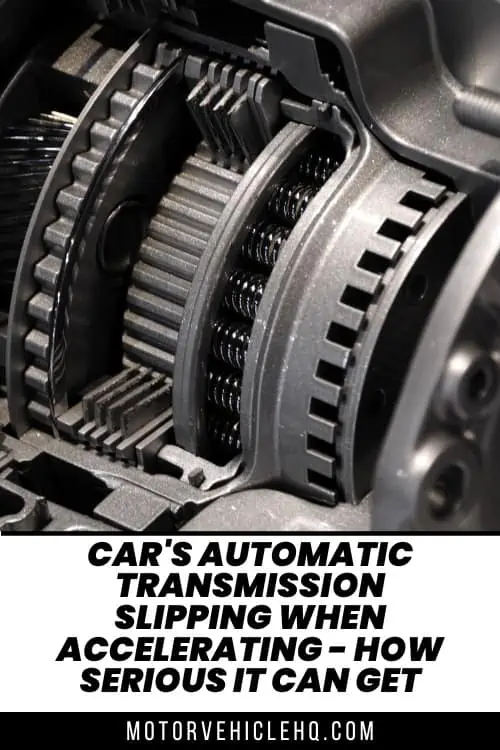

Jim Wicks is the founder of MotorVehicleHQ. With over two decades of experience in the automotive industry and a degree in Automotive Technology, Jim is a certified car expert who has worked in various roles ranging from a mechanic, car dealership manager, to a racing car driver. He has owned more than 20 cars over the past 15 years. Ask him about any vehicle you see on the road and he can tell you the make, model and year. He loves the aesthetics of all things cars, and keeps his vehicles in pristine condition.
In his free time, Jim enjoys getting his hands dirty under the hood of a classic car or taking long drives along the country roads. His favorite car? A 1967 Shelby GT500, a true classic that, according to Jim, “represents the pure essence of American muscle.”
